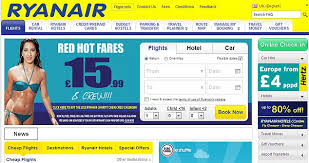Porter stated that any business that does not adopt one of these 'generic strategies' is 'stuck in the middle' and unlikely to succeed.
Cost leadership:
Attempting to be the lowest cost provider in the market.This does not always involve being the lowest price provider, but this is an option.
If the firm charges the market price it will benefit from higher profits than rivals as costs are lower.
Click on the picture. Where could you and your friends go this summer?
If the firm charges below the market price it will benefit from increased market share and will still be making a profit as costs are lower.
Features of cost leadership:
Usually one dominant firm in the market operating on a large scale.
This business will benefit from economies of scale.
There will be a clear focus on cost cutting as a business objective.
Usually involves a basic or 'no frills' product.
How budget airlines work: details here.
Differentiation:
This involves a business operating in a mass market but adopting a unique proposition instead of the lowest cost option.
How?
Adding value to a product in a unique way.
Quality.
Design.
Brand identity.
Customer service.
The business may be able to charge premium prices.
Focus:
1. Cost focus
Emphasising cost-minimisation within a focused or niche market.
Aldi offer a focused range of products at very low prices.
2. Differentiation focus
Following different strategies within a focused market.
Or...
Achieving competitive advantage through 'distinctive capabilities'.
Distinctive capability is a competency that is unique to a business establishment.
It is a quality that is superior to the qualities of other companies.
It is a quality that is superior to the qualities of other companies.
John Kay identified three types of distinctive capability:
1. 'Architecture'.
- Contacts and relationships within and around organisations.
- Relationships with suppliers and customers.
- Relationships with suppliers and customers.
- The corporate culture and the attitude of employees toward the company.
Google:
2. Reputation
Google:
2. Reputation
Very closely linked to the brand image.
Reputation takes a long time to build and can be damaged very quickly.
3. Innovation.
Reputation takes a long time to build and can be damaged very quickly.
3. Innovation.









